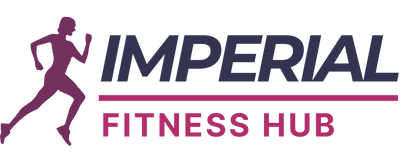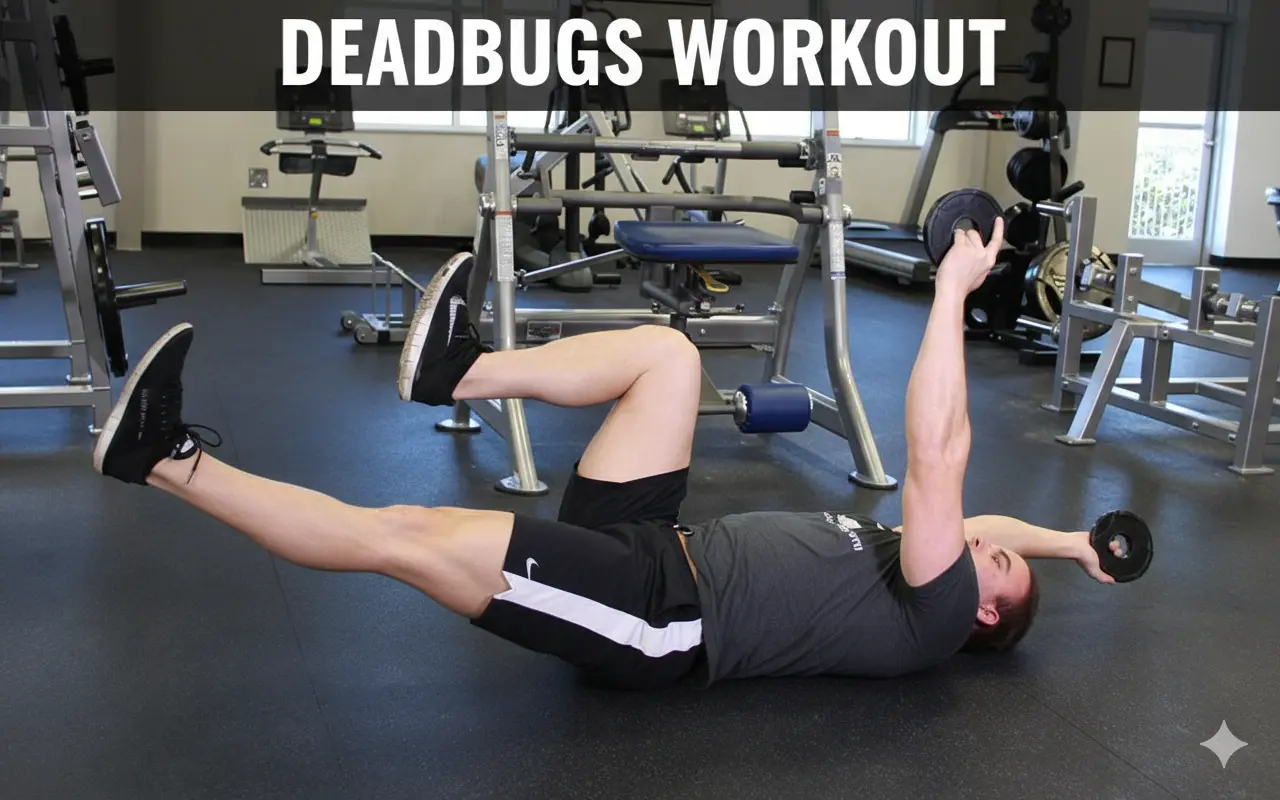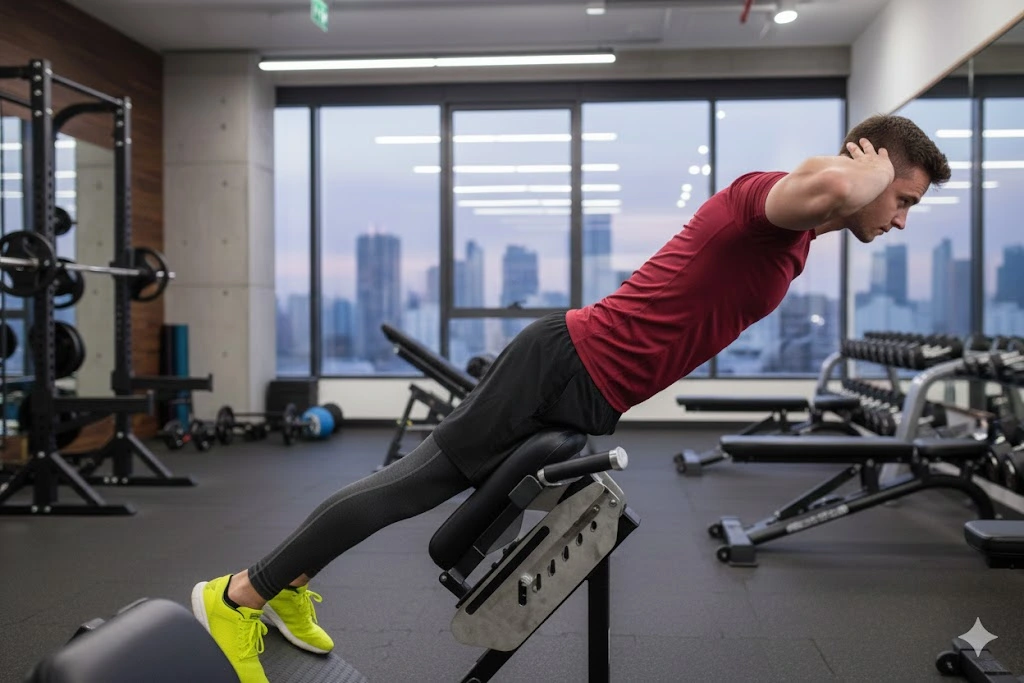Introduction
When people think of building core strength, they usually picture sit-ups, crunches, or planks. But there’s another move that beats them all, the deadbugs workout. It looks funny, but it works like magic. It builds control, stability, and protects your spine.
The move is simple. You lie on your back and move your opposite arms and legs. Yet, it trains deep core muscles that normal ab exercises often miss. Crunches can hurt your lower back, but deadbugs teach your body to brace properly. You learn coordination and balance while keeping your spine safe. It’s a favorite among physiotherapists, athletes, and trainers. Why? Because it builds real functional strength, the kind that helps you lift, twist, and move without pain.
If you’re recovering from back pain, want better athletic performance, or just want a stronger midsection, this workout helps. You need no equipment — just a mat, patience, and focus. With time, it improves posture, coordination, and body awareness. The deadbugs workout isn’t just another ab move. It’s a foundation for core health and overall strength. You can also pair it with other core-building exercises from our guide on Bodyweight Exercises to Get Strong.
Table of Contents
What Is the Dead Bug Exercise?
The deadbugs workout is simple but powerful. It strengthens your deep abdominal muscles while protecting your spine. The name sounds funny, but it fits, you lie on your back with arms and legs lifted like a dead bug. Just like the split squat, which challenges your balance and leg strength, the dead bug targets coordination and control. It helps you stabilize your core and improve posture. Despite looking easy, it’s a favorite of physiotherapists and strength coaches. It builds full-body stability and supports better movement during other exercises.
It trains your core to stabilize your spine while your arms and legs move freely. That’s how your body works in real life, walking, running, or lifting. Unlike crunches or sit-ups, it doesn’t strain your lower back or neck. It keeps your spine neutral and activates deep core muscles like the transverse abdominis, obliques, and spinal erectors, all without stress.
Unlike crunches or sit-ups, which can strain your lower back and neck. The dead bug promotes a neutral spine position, engaging deep stabilizing muscles such as the transverse abdominis, obliques, and spinal erectors without unnecessary stress. It’s one of the safest and most effective core exercises for people of all fitness levels, from beginners to athletes, and even those recovery from back pain.
In short, the dead bug exercise isn’t just about building abs, it’s about training your body to move smarter, stronger, and more efficiently.
Muscles Worked in the Deadbugs Workout
The deadbugs workout targets your whole core. It works not just the abs you see, but the deep muscles underneath. These muscles control balance, posture, and protect your spine. When done right, the exercise teaches your core to stay stable as your arms and legs move. This builds real strength that helps in daily life and boosts athletic performance.
Here’s a breakdown of the major muscles worked during the deadbugs workout:
Primary Muscles Engaged
- Transverse Abdominis – This is your deepest core muscle, often called the body’s natural weight belt. It wraps around your abdomen and stabilizes your spine during movement.
- Rectus Abdominis – Commonly known as the “six-pack” muscle, it helps flex your torso and maintain spinal alignment throughout the exercise.
- Internal and External Obliques – Located along the sides of your abdomen, these muscles assist with rotation and side stability. They also help prevent the lower back from arching during leg extensions.
If you’re combining deadbugs with other ab-focused training, try our beginner-friendly abs workout to strengthen and tone your core even faster.
Secondary Muscles Activated
- Hip Flexors (Iliopsoas and Rectus Femoris) – These muscles lift and lower your legs during the alternating movements.
- Glutes and Hamstrings – Help stabilize your pelvis and prevent it from tilting as you move your legs.
- Erector Spinae – A group of muscles running along your spine, working to keep your back stable and protected.
- Pelvic Floor Muscles – Provide internal support and help you control core tension, especially important for women postpartum.
- Shoulders and Upper Back – Keep your arms aligned and steady as you extend them overhead.
When you perform the deadbug correctly, these muscles work together to resist unwanted motion, particularly spinal extension, where the lower back tries to arch off the floor. This makes the deadbug workout an anti-extension exercise, one of the most effective ways to strengthen your core safely, according to StrengthLog’s guide on core exercises.
Pro Tip: To feel the engagement in your transverse abdominis, press your lower back gently into the mat and imagine “zipping up” your abs from your pelvis to your ribs, this engages the deep stabilizers that protect your spine.
Benefits of Deadbugs Workout
The deadbugs workout offers far more than just a stronger midsection. It builds the kind of functional core strength that supports every movement you make. Whether you’re lifting weights, sitting at a desk, or recovering from back pain, this simple exercise delivers impressive full-body benefits that go beyond appearance.
1. Strengthens Your Core From the Inside Out
Unlike crunches that mainly target surface muscles, the deadbugs workout activates your deep core stabilizers, including the transverse abdominis and multifidus. These muscles wrap around your spine like a corset, providing support and preventing injury. The more you practice, the more resilient and stable your core becomes. For even better results, pair this with our guide on Building Workout. Together, they make an ideal mix of strength, stability, and endurance training.
2. Protects Your Lower Back
This exercise trains your spine to stay neutral as your arms and legs move. It’s an important skill for preventing back pain. Physiotherapists often recommend the deadbug for people recovering from back injuries. It strengthens the muscles that support the lower spine without adding pressure.
3. Improves Coordination and Balance
The deadbug requires your opposite arm and leg to move together, forcing your brain and body to work in sync. This cross-crawl pattern enhances neural communication between the left and right hemispheres of your brain, improving balance, reflexes, and overall body control.
4. Enhances Posture and Spinal Alignment
By training the deep abdominal and spinal muscles, this workout helps you maintain proper posture whether you’re sitting, standing, or moving. Over time, you’ll notice better alignment, reduced slouching, and improved confidence in how you carry yourself.
5. Promotes Mindful Movement and Breathing
A major part of the deadbugs workout is controlled breathing. Learning to inhale and exhale with each movement teaches you how to engage your core properly. This increases oxygen flow, calms the nervous system, and promotes better muscle activation.
6. Helps With Injury Prevention and Recovery
Because it’s low-impact, the deadbug is suitable for beginners, older adults, and even those in rehabilitation programs. It builds stability in the hips, spine, and shoulders, the three areas most prone to injury during daily activity or sports.
7. Improves Athletic and Everyday Performance
Every sport or physical task, from sprinting to carrying groceries, relies on a stable core. A strong core improves power transfer between your upper and lower body, making movements more efficient and less tiring.
8. Supports Pre- and Post-Natal Core Strength
For women, this exercise strengthens the pelvic floor and deep abdominal muscles, which are essential during and after pregnancy. It promotes safe, gentle recovery and helps restore core stability.
In short, the deadbugs workout isn’t just about abs, it’s about teaching your entire body how to move better, stronger, and more safely.
How to Do the Dead Bug (Step-by-Step Guide)
The dead bug exercise may look easy, but its effectiveness depends entirely on proper form and control. Precision matters more than speed here. The goal is to keep your spine stable while your arms and legs move in perfect coordination. Follow these steps carefully to perform the deadbugs workout correctly and safely.
Step-by-Step Instructions
- Lie Flat on Your Back
Start by lying down on an exercise or yoga mat. Keep your spine neutral, not pressed flat, not overly arched. Rest your head gently on the mat and keep your eyes facing the ceiling. - Set Up Your Starting Position
Bring both knees up so they’re bent at 90 degrees, with your thighs directly above your hips. Lift your arms straight up toward the ceiling so that your wrists are positioned above your shoulders. This is your tabletop position. - Engage Your Core
Take a deep breath in, then exhale slowly while tightening your core, as if you’re bracing for a gentle punch in the stomach. This action engages your transverse abdominis, the deep muscle that supports your spine. - Begin the Movement
Inhale as you extend your right leg forward (straightening it out but not touching the floor) while reaching your left arm backward overhead. Move slowly and keep your back pressed gently against the mat, this prevents arching. - Return to Start
Exhale as you bring your right leg and left arm back to the starting position, maintaining full control. - Switch Sides
Now extend your left leg forward and your right arm overhead while keeping your core tight. Continue alternating sides, moving slowly and deliberately. - Reps and Sets
Aim for 8–12 repetitions per side for beginners. As your core strength improves, increase to 3 sets of 12–15 reps.
Keep your lower back neutral and your breathing rhythmic. If you prefer visual guidance, check out our tutorial section on Workouts for Women, which covers similar stability techniques.
Pro Tips for Perfect Form
- Keep your lower back neutral: If it starts to lift off the mat, you’re extending too far, shorten your movement.
- Move slowly: The slower you go, the harder your core has to work.
- Breathe rhythmically: Inhale as you extend, exhale as you return.
- Avoid neck strain: Keep your head relaxed and eyes up; don’t tuck your chin too hard.
- Use a ball for feedback: Placing a small ball or pillow between your opposite hand and knee helps reinforce proper engagement.
By focusing on precision over intensity, the deadbugs workout strengthens the body’s natural stabilizers while protecting your spine, a key reason why physical therapists and athletes both love it.
Common Mistakes to Avoid
Even though the deadbugs workout looks simple, many people perform it incorrectly, and that can reduce its effectiveness or even lead to discomfort. To get the best results and protect your spine, avoid these common mistakes that can ruin your form and muscle engagement. Remember, deadbugs are all about control over intensity, just like the focus in our blog on workout Meal tips, where timing and precision matter for the best results.
1. Arching the Lower Back
This is the most frequent mistake. When your lower back lifts off the mat during leg workouts, it means your core has lost engagement. This shifts the tension away from your abs and places stress on your lumbar spine.
Fix it: Keep your lower back gently pressed into the floor throughout the movement. If you can’t maintain contact, limit your range of motion, don’t lower your leg too far.
2. Moving Too Fast
Speeding through the movement might make it look like you’re working hard, but it actually reduces control and prevents proper muscle activation.
Fix it: Slow down. Each rep should take around 5–7 seconds, three seconds to extend, one second to hold, and three seconds to return.
3. Using the Same Arm and Leg
The dead bug is a cross-body exercise, meaning the opposite arm and leg should move together. Using the same side destroys the cross-crawl pattern and reduces the coordination benefit.
Fix it: Always move your right arm with your left leg, and vice versa.
4. Holding Your Breath
Many people unconsciously hold their breath while focusing on form. This limits oxygen flow and reduces core stability.
Fix it: Coordinate your breathing, inhale as you extend, exhale as you return. This helps activate your diaphragm and core together.
5. Lifting the Neck or Shoulders
Some people try to “look” at their legs or arms while performing the exercise, which strains the neck and shoulders.
Fix it: Keep your head relaxed and gaze toward the ceiling. Let your neck stay neutral and your shoulders down.
6. Overextending the Arms or Legs
Dropping your limbs too low can cause your back to arch and compromise form.
Fix it: Only extend your arm or leg as far as you can while maintaining a stable core and flat lower back.
7. Neglecting Proper Engagement
If your abs aren’t braced, you’ll rely on your hips or lower back instead.
Fix it: Before each rep, consciously tighten your core, think of “zipping up” your abs and keeping your ribs down.
By avoiding these common mistakes, you’ll make each repetition more effective and safe. Remember, the deadbugs workout is all about control, not speed. When you move deliberately, you engage your core the way it was designed to function: stable, strong, and balanced.
Variations and Progressions
Once you master the basic deadbugs workout, you can make it harder with new variations. The Nourish Move Love Dlead Bug Tutorial shows creative ways to do this. These versions still work your core-stabilizing muscles but add resistance, coordination, or balance. Whether you’re a beginner or an athlete, there’s a version that matches your level and helps you grow stronger.
Beginner Variations
- Single-Limb Dead Bug
Instead of moving the opposite arm and leg at once, move just one limb at a time. This allows you to focus on maintaining core stability without overwhelming coordination demands.
Perfect for beginners or those recovering from injury. - Bent-Knee Dead Bug
Keep your knees bent throughout the movement rather than extending them fully. This shortens the lever length, reducing strain on the lower back while keeping the core active.
Ideal for those with lower back sensitivity. - Foot Tap Dead Bug
From the starting position, tap one foot to the floor at a time while keeping your arms still. It’s a gentle way to strengthen your lower abs while building control.
Intermediate Variations
- Stability Ball Dead Bug
Hold a small exercise ball or pillow between your opposite hand and knee while performing the movement. This increases tension and forces deeper core activation.
Pro tip: Keep pressure on the ball throughout the move to engage your inner abs. - Resistance Band Dead Bug
Anchor a resistance band behind you and hold it in your hands as you extend your arms and legs. The band adds external tension that challenges both your stability and strength. - Alternating Slow Motion Dead Bug
Slow each rep down to 10–12 seconds per cycle. The longer time under tension builds endurance and fine motor control.
Advanced Variations
- Weighted Dead Bug
Hold light dumbbells in your hands to add resistance to your arm movement. This version engages your shoulders, arms, and core simultaneously.
Keep the weights light (2–5 lbs) to avoid strain. - Banded Cross-Crawl Dead Bug
Loop a mini resistance band around your feet. As you extend one leg, the band provides tension that activates your hip flexors and lower abs more intensely. - Dead Bug Isometric Hold
Extend both legs and arms halfway and hold the position for 15–20 seconds. This static variation maximizes endurance and builds spinal stability. - Inclined Dead Bug (Pregnancy/Postnatal)
Lie with a bolster or pillow supporting your upper back to create a gentle incline. Perform slow, controlled movements. This reduces pressure on the abdomen and improves blood flow.
These variations allow you to progress gradually, from building basic coordination to mastering advanced resistance movements. The key is to prioritize form and stability over speed or intensity. Even small adjustments, like adding a ball or band, can completely transform how your core muscles engage during the workout. For more personalized schedules, visit our detailed training program guide, Workout Schedule for females.
Deadbug Workout vs Plank vs Reverse Plank
Core training isn’t just about one movement, it’s about combining different exercises that challenge your muscles in unique ways. The deadbugs workout, plank, and reverse plank are three of the best core exercises for overall strength, stability, and posture. While they share the same goal, a stronger, more balanced core, each one targets different muscle groups and movement patterns. Understanding their differences helps you build a well-rounded and effective core routine.
1. Deadbug Workout – Dynamic Core Stability
The deadbug is a dynamic anti-extension exercise, which means it trains your core to resist arching or twisting as your limbs move. This movement teaches coordination and control while strengthening the deep stabilizing muscles — the transverse abdominis, obliques, and spinal erectors.
- Best For: Beginners, people with back pain, or anyone working on stability and coordination.
- Key Benefits: Builds cross-body coordination, strengthens the deep core, and promotes proper spinal alignment.
- Focus Area: Core, hip flexors, pelvic floor, and shoulders.
- Type: Dynamic and movement-based.
2. Plank – Isometric Core Strength
The plank is an isometric exercise, which means you hold a position instead of moving through repetitions. It targets the entire core, including your abs, lower back, shoulders, and glutes, by forcing them to stabilize your body against gravity. The longer you hold the plank, the greater the endurance challenge for your core.
- Best For: Building endurance, total-body tension, and posture correction.
- Key Benefits: Strengthens the abdominals and shoulders, improves posture, and enhances overall core stability.
- Focus Area: Abdominals, shoulders, glutes, and back.
- Type: Static hold with full-body tension.
3. Reverse Plank – Posterior Chain Engagement
The reverse plank flips the traditional plank upside down. Instead of facing the floor, you face upward while keeping your body straight from head to heels. This variation emphasizes the posterior chain, the muscles along your back, including the glutes, hamstrings, and spinal extensors. It also engages the abs to maintain stability and prevent sagging.
- Best For: Strengthening the back, glutes, and hamstrings while improving posture.
- Key Benefits: Opens the chest, strengthens the backside of the body, and improves balance between front and back muscles.
- Focus Area: Glutes, hamstrings, lower back, and core.
- Type: Static anti-flexion exercise.
Each of these exercises complements the others beautifully. The deadbug builds your stability and coordination, and the plank develops endurance and core strength. The reverse plank balances your posture by targeting your posterior chain. When combined in a single routine, they provide a complete 360° core workout that enhances both strength and functional movement.
Sample Deadbugs Workout Routine
Creating an effective deadbugs workout routine means combining structure, progression, and balance. The deadbug exercise is extremely versatile, it can be your warm-up, main core movement, or part of a full-body circuit. Below is a sample routine that gradually increases in difficulty, engaging your abs, hips, back, and stabilizing muscles while improving coordination and endurance.
A. Beginner Deadbugs Routine (Bodyweight Only)
Goal: Build stability, control, and muscle activation.
Warm-up (5 minutes):
- Cat-Cow Stretch – 10 reps
- Glute Bridge – 10 reps
- Bird-Dog – 8 reps per side
- Deep breathing – 60 seconds
Main Workout:
- Deadbug (basic) – 3 sets of 10 reps (5 per side)
- Single-Limb Deadbug – 2 sets of 8 reps per side
- Stability Hold Deadbug – Hold for 15–20 seconds per side
- Glute Bridge – 3 sets of 12 reps
- Plank (optional) – 2 sets of 20–30 seconds
Cool-down:
- Knees-to-chest stretch – 30 seconds
- Seated forward fold – 30 seconds
- Child’s pose – 1 minute
Frequency: 3 times per week
B. Intermediate Deadbugs Routine (With Equipment)
Goal: Improve strength, balance, and movement control.
Warm-up (5 minutes):
- Dynamic hip flexor stretch – 10 reps
- Shoulder rolls – 10 reps.
- Core activation with deep belly breathing – 60 seconds
Main Workout:
- Stability Ball Deadbug – 3 sets of 12 reps
- Resistance Band Deadbug – 3 sets of 10 reps
- Weighted Deadbug (light dumbbells) – 2 sets of 8 reps
- Reverse Plank Hold – 3 sets of 30 seconds
- Plank with Shoulder Tap – 2 sets of 10 taps per side
Cool-down:
- Supine twist – 30 seconds per side
- Hamstring stretch – 30 seconds per side
- Diaphragmatic breathing – 1 minute
Frequency: 3–4 times per week
C. Advanced Deadbugs Circuit (Core Stability Challenge)
Goal: Build endurance, power, and total core stability.
Warm-up (5 minutes):
- Jumping jacks – 30 seconds
- Deadbug slow motion – 5 reps
- Deep squat stretch – 30 seconds
Main Circuit (Repeat 2–3 rounds):
- Weighted Deadbug with Dumbbells – 10 reps
- Deadbug with Resistance Band (Cross tension) – 8 reps per side
- Deadbug Isometric Hold – 20 seconds hold
- Forearm Plank (Add opposite arm/leg lift) – 30 seconds
- Reverse Plank – 30 seconds
Rest: 45–60 seconds between exercises.
Cool-down:
- Cobra stretch – 30 seconds
- Happy baby pose – 30 seconds.
- Deep belly breathing – 60 seconds
Frequency: 4–5 times per week (alternate with rest days for recovery).
Frequently Asked Questions (FAQs) About the Deadbugs Workout
Q1. What is the deadbugs workout good for?
The deadbugs workout strengthens your core muscles, especially the transverse abdominis, which stabilizes your spine and improves posture. It’s also great for preventing back pain and enhancing balance.
Q3. How many sets and reps should I do?
Yes. It’s a beginner-friendly core exercise that focuses on stability and coordination without stressing the lower back, making it perfect for all fitness levels.
Q3. How many sets and reps should I do?
Start with 2–3 sets of 8–12 reps per side, focusing on slow, controlled movements. As your strength improves, increase reps or add resistance.
Q4. Can I do deadbugs every day?
You can, but your core needs rest to recover. Doing the deadbug 3–5 times per week gives the best results for strength and endurance.
Q5. Does the deadbug burn belly fat?
Not directly. It builds strong abs, but fat loss comes from a calorie deficit, proper diet, and full-body workouts. It builds abs, but for fat loss, combine it with a proper diet and chair exercises for belly fat.
Q6. Why is it called the “dead bug” exercise?
Because your body position, lying on your back with arms and legs up, looks like a dead bug flipped over. The name may sound funny, but the benefits are serious.
Conclusion
The deadbugs workout may look simple, but it’s one of the most powerful exercises for building true core strength. Unlike flashy ab moves that strain your spine, the deadbug teaches your body stability, coordination, and control, the foundations of real fitness. By mastering this movement, you not only tone your abs but also protect your back, improve balance, and move better in everyday life.
Whether you’re just starting your fitness journey or already training at an advanced level, make the deadbug exercise a consistent part of your routine. It’s safe, effective, and adaptable for everyone. Stay patient, focus on form, and you’ll soon feel the difference in your strength, posture, and confidence.






One Response
It’s appropriate time to make some plans for the future and it’s time to be happy. I’ve read this post and if I could I wish to suggest you few interesting things or advice. Perhaps you can write next articles referring to this article. I want to read even more things about it!